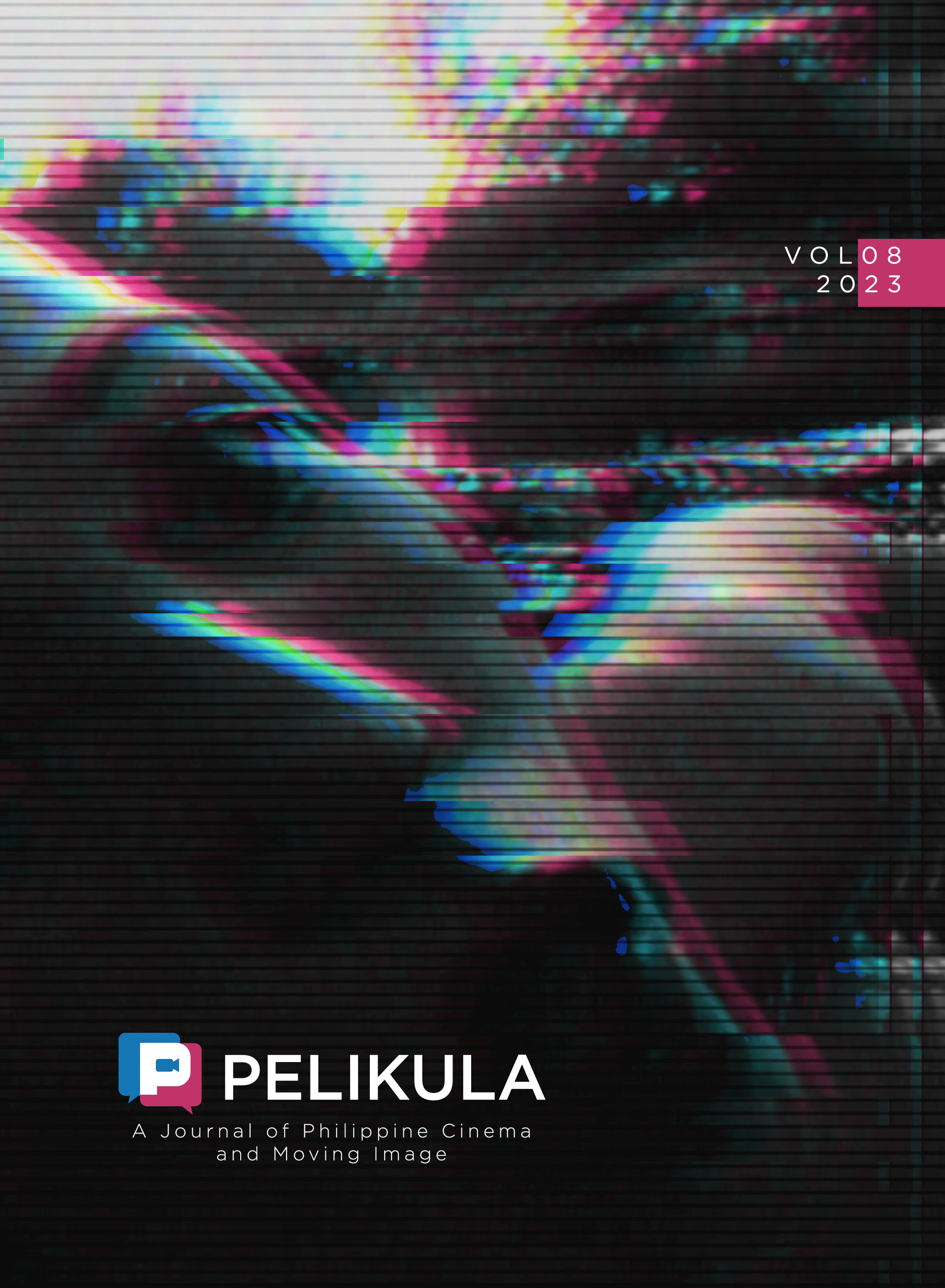Volumes
Pelikula Journal vol. 9 (2024)
Terra cognita and incognita. A Filipino lands on the moon in Richard Abelardo’s Zarex (1958): a dream from the past looking into the future; a memory from tomorrow, looking back to today. PELIKULA 9 configures the nexus and interstices within and surrounding Philippine cinema and moving image by bringing together the historiographic, transmedial, interdisciplinary, political economic, multimodal, and poetic works of scholars, cultural workers, teachers, scientists, activists, and artists. This volume charts not only a trajectory of re-visions but also a register of voices and silences, guided by PELIKULA’s commitment to map an ever-expanding materiality, epistemology, and phenomenology of Filipino cinematic heritage.
Supported by the UP Diliman Office of the Chancellor.
Pelikula Journal vol. 8 (2023)
Julie Lluch’s Piscean Deluge (1990) pictures a woman traversing troubled waters, at the peak of a freestyle stroke, catching a breath of air. In parallel, PELIKULA journeys in this volume through the turbulence of a post-pandemic world, navigating waters troubled by virtuality, violence, exploitation, indifference, deceit, disillusionment, discord—our disrupted manners of living with the world and the ways the moving image allows us to make sense of it.
Historically, cinema has always been uniquely positioned to examine relations of stillness and motion as it freezes substance into image and places it in curated time. Wading through coded choreographies, mixed-media montage, hybrid and experimental forms, and new platforms of screening and exhibition, this volume of PELIKULA explores this vivid potential in alternative trajectories of film practice. In these trajectories, the body and the screen shift in shape: dance probes the limits of the frame, activist resistance disrupts narrative wholeness, sex as currency seeks, speaks, and capitulates to power. The moving image betrays the generative possibilities of cinematic rupture, so that between the frames, the processes of production bare themselves to critical examination and break through to kinesthetic empathy—reaching beyond the screen to set us, and new futures, in motion.
Pelikula Journal vol. 7 (2022)
The Kura Sambalani is a white-winged horse that appears at the end of the Tausug epic Parang Sabil (holy warfare) to carry away the martyrs. In this volume of PELIKULA, the wars of today lie siege to martyrdom: fascism spins mythologies to paint itself as a necessary evil; authoritarianism camouflages impunity with good intentions in virtual/ized reality; the empire seduces and reduces, building promises it can profit from.
At stake in this issue, then, is memory: how we make sense of the dislocations brought about by migration and diaspora, the violence of historical revisionism, the struggles of cultural change and alienation. In media and film, heroism distorts in the brute realities played out on the screen; but as in the recovered strokes of Danilo Dalena’s hand-drawn storyboard of the Kura Sambalani rising above the dead of the Bud Dajo Massacre, we shall in time remember the sensations of struggle, revolution, redemption, home, truth. And wherever our minds or bodies may take flight, may we never forget.
Supported by the UP Diliman Office for Initiatives in Culture and the Arts.
Pelikula Journal vol. 6 (2021)
An amalgamation of images from Lav Diaz’s films frame the volume’s “outward orientation” of Philippine cinema, signifying the place of Filipino film in a resonant Southeast Asian regional cinema while also capturing in one picture the mood of the times. Diaz arguably represents a, if not the, crux of myriad contradictions and debates in contemporary cinema: nationalism and internationalization, the (g)local and the cosmopolitan, experimentation and access, art and function, region and nation, memory and imagination. In this light, the composite scene assembled from Mula sa Kung Ano ang Noon, Ang Panahon ng Halimaw, and Genus Pan reorient these cinematic images toward new paths of resistance and salvation, reinvigoration, and reimagination, despite and because of the social and political anxieties of our present historical moment.
Supported by The Japan Foundation, Manila and the UP Diliman Office for Initiatives in Culture and the Arts.
Pelikula Journal vol. 5 (2020)
Sedition. This was the criminal charge brought against Lino Brocka and Behn Cervantes for speaking up for workers during a transport strike in 1985. By then, the Marcos dictatorship had cultivated innumerable vehement critics, many among the ranks of artists and film workers, who campaigned for the restoration of civil liberties and protested state-sponsored human rights violations—campaigns Brocka and Cervantes advanced to the chagrin of the state that tried to silence them under threat of the maximum penalty of death.
Philippine cinema has had an illustrious history of social commitment. No strangers to red-tagging, vocal film artists have risked life, limb, and liberty to speak truth to power in their movies and on the streets. In the pages of PELIKULA, we trace the history of People’s Cinema and the activist tradition in Filipino filmmaking from earlier dark eras and vibrant periods of resistance to the world now transformed by COVID-19. This volatile age of pandemic lockdowns and systematic shutdowns of our freedoms once again calls upon film artists and film lovers to carry on this heroic legacy in these, our own, dark times.
Pelikula Journal vol. 4 (2019)
Who is Isabel Acuña? Smiling next to her husband, the vaunted “Father of Philippine Cinema” José Nepomuceno, she is surfaced from forgotten history on the 2019 cover of the PELIKULA as a similarly important force: pioneer casting director, art director, and producer. Many other facets of Philippine film history are likewise recuperated in the pages of the journal as it returns 20 years since its first release in 1999. Coming just at the heels of Philippine cinema’s centennial celebration, it dives into the vibrant, many yet unwritten, narratives of Philippine cinema, chronicling and provoking important conversations on its various pasts and possibilities.







